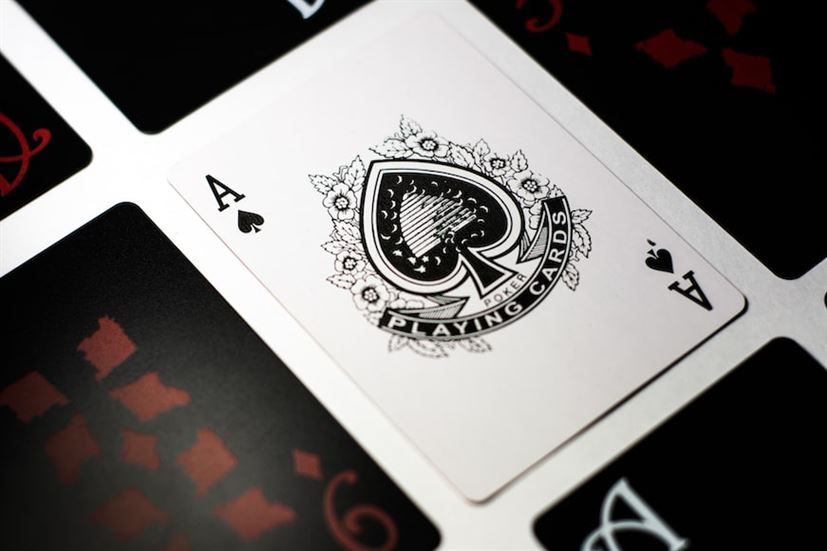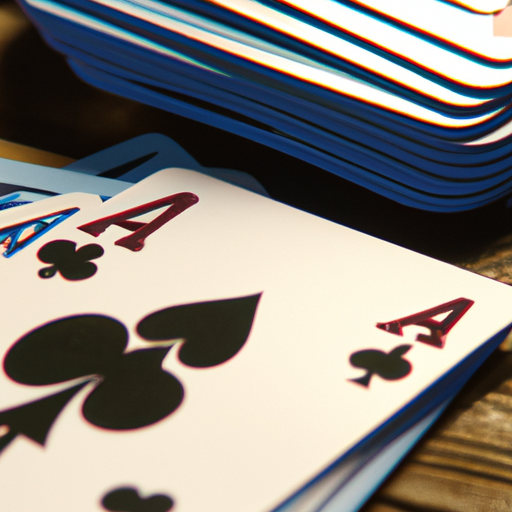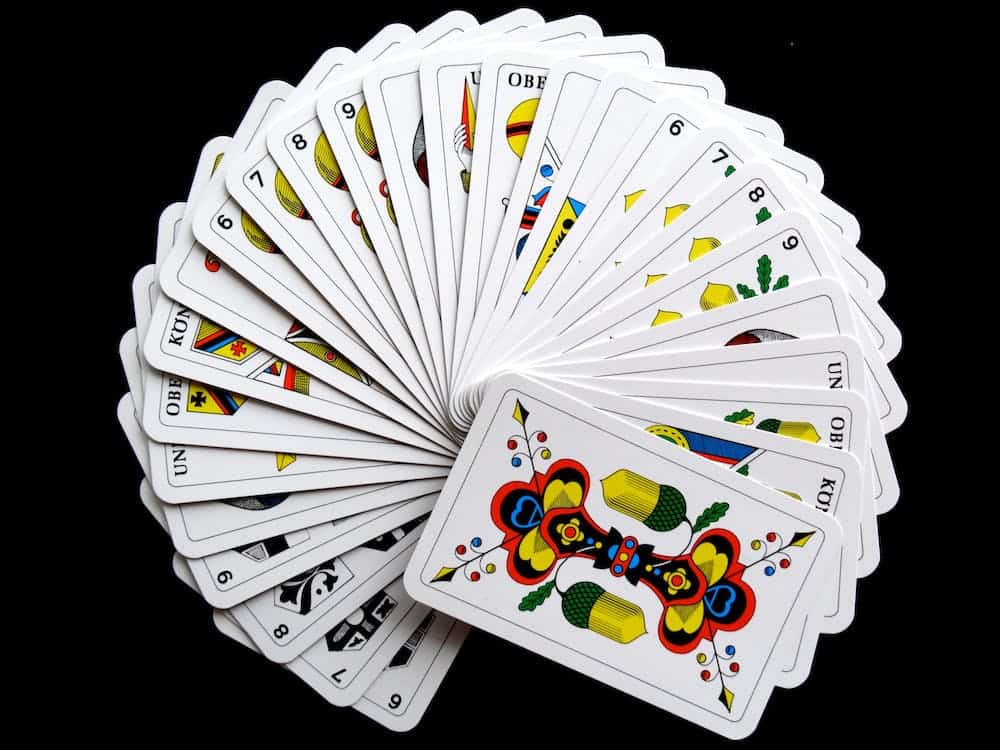The game of poker is steeped in history and folklore, with numerous tales and legends surrounding its origins and iconic moments. One such legend that has captured the imagination of poker enthusiasts for generations is that of the Dead Man’s Hand. This infamous hand holds a special place in poker lore, symbolizing both tragedy and triumph on the felt. In this article, we will explore the significance of the Dead Man’s Hand, delving into its origin story, its connection to Wild Bill Hickok, and its enduring legacy in the world of poker.
The Origins and History of the Dead Man’s Hand in Poker Lore
The game of poker has long been steeped in legends and myths, with tales of high-stakes showdowns and extraordinary wins captivating players and enthusiasts alike. One such legend that has become deeply ingrained in poker lore is that of the “Dead Man’s Hand.” This infamous hand, consisting of two black aces and two black eights, holds a special place in the hearts of poker aficionados. Its origin can be traced back to the Wild West era, where it gained notoriety as the hand held by a deceased gambler, forever immortalizing him in the annals of poker history.
To truly understand the significance of the Dead Man’s Hand, one must delve into its origins and history. The story begins on August 2, 1876, in the dusty town of Deadwood, Dakota Territory. It was here that the renowned gunslinger and professional gambler, James Butler “Wild Bill” Hickok, met his untimely demise. As the tale goes, Hickok was engrossed in a high-stakes poker game at Nuttal & Mann’s Saloon when he was shot in the back of the head by Jack McCall, an angry local seeking revenge for a previous dispute.
When Hickok fell lifeless onto the saloon floor, his hand still clutched the cards he had been dealt. These cards would forever be etched in poker folklore as the Dead Man’s Hand – a pair of black aces and a pair of black eights. The fifth card remains disputed among historians, with some claiming it was a nine of diamonds while others argue it was a queen of clubs. Regardless of the exact composition, this fateful hand became synonymous with tragedy and misfortune.
In the years following Hickok’s death, the legend of the Dead Man’s Hand grew, capturing the imagination of poker players around the world. The hand came to symbolize bad luck and a foreboding omen, believed to bring ill-fortune to those who dared to play it. Many superstitious gamblers would even refuse to touch or utter its name, fearing that it would invite disaster upon them.
As time passed, the Dead Man’s Hand became an integral part of popular culture, making appearances in books, movies, and television shows. It became a powerful symbol, representing the risks and uncertainties inherent in the game of poker. Its allure extended beyond the gambling realm, captivating audiences with its tragic backstory and mysterious aura.
Today, the Dead Man’s Hand continues to hold significance in the world of poker. Tournaments and events often pay homage to its legacy, featuring special prizes or dedicating specific rounds to this legendary hand. Poker enthusiasts still discuss and debate its origins, adding fuel to the enduring fascination surrounding the Dead Man’s Hand.
In conclusion, the Dead Man’s Hand stands as a testament to the enduring power of legends in the world of poker. Its origin story, rooted in the Wild West era, has become deeply ingrained in poker lore. This infamous hand, comprised of two black aces and two black eights, carries with it a sense of tragedy and misfortune. From its humble beginnings in a dusty saloon to its place in popular culture, the Dead Man’s Hand continues to captivate and mystify players and fans alike.
Famous Poker Players Associated with the Dead Man’s Hand

When it comes to poker lore, few stories captivate enthusiasts more than that of the Dead Man’s Hand. This infamous hand, consisting of a pair of black aces and a pair of black eights, has become synonymous with bad luck and tragedy in the game. Its origins can be traced back to the Wild West, where tales of legendary poker players have been immortalized.
One such player is James Butler “Wild Bill” Hickok, a gunslinger and gambler who met his untimely demise while playing poker in Deadwood, South Dakota, in 1876. It was during this fateful game that he was dealt the now-iconic Dead Man’s Hand. Moments later, Hickok was shot dead by Jack McCall, a man seeking revenge for perceived slights. The legend of the Dead Man’s Hand was born.
Hickok’s association with the Dead Man’s Hand has made him an enduring figure in poker history. His skill as a player and his tragic end have elevated him to near-mythical status. Despite his brief career, Hickok’s impact on the game cannot be overstated. He was known for his sharp wit and strategic prowess, qualities that undoubtedly contributed to his success at the table.
Another famous poker player linked to the Dead Man’s Hand is Johnny Moss, a Texas-born gambler considered one of the greatest players of all time. Moss was not only a skilled card player but also a shrewd businessman, making him a force to be reckoned with both on and off the felt. While there is no record of Moss ever being dealt the Dead Man’s Hand, his association with the legend stems from his deep knowledge and respect for poker history.
Moss played a pivotal role in popularizing the game of Texas Hold’em, which eventually became the most widely played variant of poker. He won the inaugural World Series of Poker (WSOP) Main Event in 1970 and went on to claim a total of nine WSOP bracelets throughout his career. Moss’s contribution to the game, combined with his reverence for its history, solidified his connection to the Dead Man’s Hand.
One more notable player associated with the Dead Man’s Hand is Jack “Treetop” Straus, an American poker pro known for his flamboyant style and larger-than-life personality. Straus was dealt the Dead Man’s Hand during the final hand of the 1982 World Series of Poker Main Event. Facing a seemingly insurmountable chip disadvantage, he managed to stage an incredible comeback and win the tournament, forever etching his name in poker lore.
Straus’s triumph became legendary, not only because of his dramatic victory but also because of the hand that led him there. The Dead Man’s Hand, traditionally seen as a symbol of misfortune, was transformed into a harbinger of success by Straus’s extraordinary feat. His story serves as a reminder that even when faced with seemingly impossible odds, perseverance and skill can turn the tables.
In conclusion, the Dead Man’s Hand has become an enduring symbol in poker lore, representing both tragedy and triumph. Famous players like Wild Bill Hickok, Johnny Moss, and Jack Straus have cemented their place in history due to their association with this iconic hand. Their stories serve as reminders of the unpredictable nature of the game and the indelible mark it leaves on those who play it. Whether viewed as a curse or a blessing, the Dead Man’s Hand remains a powerful emblem in the world of poker.
Symbolism and Superstitions Surrounding the Dead Man’s Hand in Poker
Poker is a game that has captured the imagination of people around the world for centuries. It is a game of skill, strategy, and chance, with players vying to outwit their opponents and walk away with a winning hand. But within the realm of poker lore, there is one hand that stands out above all others: the Dead Man’s Hand.
The Dead Man’s Hand consists of two black aces and two black eights, usually accompanied by an unknown fifth card. This hand holds a special place in the annals of poker history, as it is said to be the hand that Wild Bill Hickok was holding when he was shot dead during a game of poker in 1876. The legend of the Dead Man’s Hand has since become intertwined with notions of bad luck and impending doom in the poker community.
The symbolism surrounding the Dead Man’s Hand is both fascinating and eerie. The black aces and eights are believed to represent the cards that were found in Hickok’s hand after his death. These cards have come to symbolize death, as they were the last cards he ever held. Additionally, the unknown fifth card adds an air of mystery and uncertainty to the hand, further fueling its reputation as a harbinger of misfortune.
Superstitions abound when it comes to the Dead Man’s Hand. Many poker players believe that simply possessing these cards will bring them bad luck at the table. Some even go so far as to refuse to play a hand if they are dealt the dreaded combination. Others believe that the only way to break the curse is to fold immediately upon receiving the Dead Man’s Hand, regardless of the strength of their other cards.
This superstition has been perpetuated through generations of poker players, leading to a widespread fear of the Dead Man’s Hand. Even professional players, who rely on skill and strategy rather than luck, have been known to succumb to the belief that this hand is cursed. The mere mention of the Dead Man’s Hand can send shivers down the spines of even the most seasoned poker veterans.
But where did this superstition originate? Some believe that it stems from a desire to explain the tragic end of Wild Bill Hickok. By attributing his death to the cards he held, players could rationalize their fear and avoid taking unnecessary risks. Others argue that the superstition is simply a result of confirmation bias – players remember the times they lost with the Dead Man’s Hand more vividly than the times they won, leading them to believe that it is an unlucky combination.
Regardless of its origins, the superstition surrounding the Dead Man’s Hand continues to persist in the world of poker. It has become a part of the game’s lore and adds an element of intrigue to every hand dealt. Whether one believes in the curse or not, there is no denying the power that the Dead Man’s Hand holds over the collective imagination of poker players worldwide.
In conclusion, the symbolism and superstitions surrounding the Dead Man’s Hand in poker are deeply ingrained in the game’s history and culture. This legendary hand represents death and bad luck, with many players fearing its presence at the table. While some may dismiss these beliefs as mere superstition, the allure and mystery of the Dead Man’s Hand continue to captivate poker enthusiasts around the globe.
Impact of the Dead Man’s Hand on Pop Culture and Entertainment
The Dead Man’s Hand has become an iconic symbol in the world of poker lore. It is a hand that carries with it a sense of mystery and intrigue, captivating both seasoned players and casual enthusiasts alike. While its origin lies in a tragic event from the Old West, the impact of the Dead Man’s Hand extends far beyond the game itself. This article will explore the significance of the Dead Man’s Hand in pop culture and entertainment.
One cannot discuss the influence of the Dead Man’s Hand without mentioning its prominent role in literature and film. Countless novels and movies have used this legendary hand as a plot device, adding an element of suspense and danger to their stories. The image of a gambler clutching a pair of black aces and eights has become synonymous with impending doom, creating tension for audiences and readers. From classic Westerns to modern thrillers, the Dead Man’s Hand continues to captivate imaginations and leave a lasting impression.
In addition to its presence in fictional narratives, the Dead Man’s Hand has also made its mark on popular music. Musicians across various genres have referenced this infamous hand in their lyrics, often using it as a metaphor for life’s uncertainties and risks. Whether it be blues, rock, or even hip-hop, the Dead Man’s Hand serves as a powerful symbol that resonates with listeners. Its inclusion in song lyrics not only adds depth to the storytelling but also showcases the enduring fascination with this enigmatic hand.
Beyond artistic mediums, the Dead Man’s Hand has influenced other forms of entertainment as well. In the realm of gaming, it has become a recognizable symbol in video games and online platforms dedicated to poker. Players strive to achieve this elusive combination of cards, hoping to replicate the thrill associated with the hand’s storied history. The inclusion of the Dead Man’s Hand in these virtual environments speaks to its enduring popularity and cultural significance.
Moreover, the Dead Man’s Hand has become a part of popular culture beyond its direct representation in various forms of media. It has infiltrated everyday language, often used as an idiom to describe a situation or outcome that is doomed from the start. People may casually refer to a bad hand in any game as a “Dead Man’s Hand,” signifying their understanding of the metaphorical weight carried by this term. Its usage in colloquial speech further solidifies its place in our collective consciousness.
In conclusion, the Dead Man’s Hand has left an indelible mark on pop culture and entertainment. Through literature, film, music, gaming, and everyday language, it continues to captivate and intrigue audiences across generations. The enduring fascination with this legendary hand speaks to its significance and the power it holds as a symbol of uncertainty and impending doom. Whether one is a poker enthusiast or not, the Dead Man’s Hand remains a potent reminder of the enduring allure of chance and fate.





